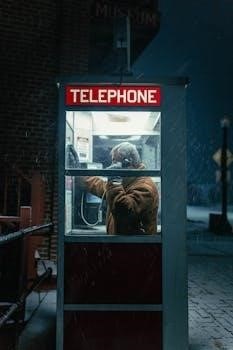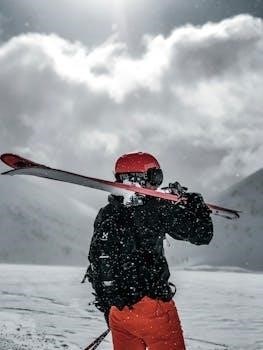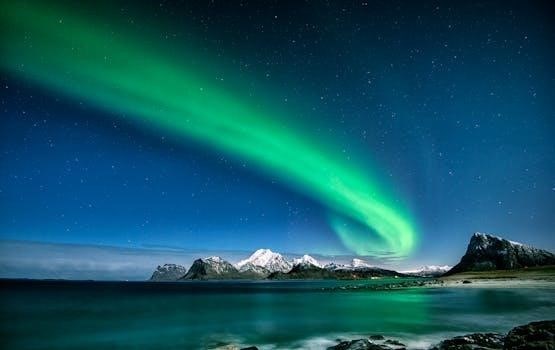Understanding the Importance of Snow Goggle Lenses
Snow goggles are vital for skiers and snowboarders, protecting from wind and improving visibility. The correct lenses enhance contrast and reduce eye strain, ensuring a safer and more enjoyable experience on the slopes.
Why Goggle Lenses Matter for Skiing and Snowboarding
Goggle lenses are paramount for clear vision while skiing or snowboarding, significantly impacting on-mountain safety and enjoyment. Without proper lenses, glare, flat light, and changing conditions can severely impair sight, leading to potential hazards and reduced performance. The right lens tint manipulates the light spectrum, filtering out distracting colors and enhancing contrasts, allowing riders to better perceive terrain details and react quickly to changes in snow conditions. This enhanced perception reduces eye strain and improves the overall experience, ensuring riders can safely navigate varying terrains and enjoy the full beauty of their surroundings. Choosing the correct lens is essential for optimal visibility and performance.
Key Factors in Choosing Snow Goggle Lenses
Selecting the correct snow goggle lens involves understanding visible light transmission (VLT) and ensuring 100% UV protection. These factors are crucial for optimal vision and eye safety.
Visible Light Transmission (VLT) and its Significance
Visible Light Transmission, or VLT, is a crucial factor when choosing snow goggle lenses. It refers to the percentage of light that passes through the lens to your eyes. A higher VLT means more light gets through, making it suitable for low-light conditions like overcast or snowy days. Conversely, a lower VLT is ideal for bright, sunny days, reducing glare and preventing eye strain. Understanding VLT is essential to ensure you have the right lens for the specific weather conditions you’ll be encountering on the slopes, allowing you to see the terrain clearly and safely. Selecting the appropriate VLT enhances your overall visibility and performance.
UV Protection⁚ A Must-Have for All Lenses
UV protection is absolutely critical in snow goggle lenses, regardless of the tint or weather conditions. Snow reflects UV rays, intensifying their harmful effects on your eyes, even on cloudy days. All reputable snow goggle lenses provide 100% protection from UVA, UVB, and UVC rays. This protection is essential to prevent long-term eye damage and discomfort. Choosing lenses with this built-in feature is not optional; it is a must-have for maintaining your eye health. Prioritizing UV protection ensures you can enjoy your time on the slopes without risking your eyesight. It’s a fundamental aspect of any quality snow goggle.

Common Snow Goggle Lens Colors and Their Uses
Goggle lenses come in various colors, each designed for specific light conditions. Understanding these colors helps optimize visibility, enhancing your performance and safety on the slopes.
Yellow and Gold Lenses for Low Light Conditions
Yellow and gold lenses are excellent for low-light conditions, such as overcast or foggy days on the slopes. These tints filter out blue light, which is prevalent in such environments. By doing so, they reduce glare and enhance depth perception, making it easier to see variations in the terrain. This improves your ability to react to changes in the snow, increasing safety. Many users find yellow or gold lenses very versatile and suitable for different light conditions, although they are particularly useful during flat light days. They also have the added benefit of working well on sunny days as well.
Amber and Rose Lenses for Enhanced Contrast
Amber and rose-tinted lenses are designed to significantly enhance contrast, making them ideal for variable or partly cloudy conditions. These lens colors excel at filtering out blue light, which can cause haze and reduce visual clarity. By blocking the blue spectrum, amber and rose lenses heighten your perception of depth and detail on the snow, allowing you to see the subtle contours of the terrain more easily. This enhanced contrast aids in distinguishing between shadows and bumps. These options are popular choices for riders looking for increased terrain definition and improved performance in changing weather.
Brown Lenses for Flat Light Conditions
Brown lenses are particularly effective in flat light conditions, where the lack of shadows can make it difficult to discern variations in the snow surface. The warm tint of brown lenses enhances depth perception and makes terrain details more visible. By increasing the contrast between different shades of white, brown lenses allow skiers and snowboarders to see bumps, dips, and other changes in the terrain more clearly. This improved visibility is essential for safety and performance, allowing riders to react quickly to changing conditions and avoid potential hazards. Brown lenses are a valuable asset for those who frequently encounter flat light.
Green Lenses for All-Purpose Use
Green lenses are often considered a versatile option for various weather conditions, providing good all-around performance. They offer a balanced color perception, dimming glare while simultaneously brightening shadows. This helps to improve contrast, making it easier to see details in both bright and low-light situations. Green lenses also enhance color perception which can be advantageous for skiers and snowboarders, allowing them to better distinguish terrain features. Their ability to handle a wide range of conditions makes them a convenient choice for those who prefer not to switch lenses frequently or who want a reliable lens for variable mountain weather. They offer a good balance between light filtration and clarity.

Specialized Lens Features
Advanced coatings and technologies, like REVO, anti-fog, and Prizm/Perceive, enhance lens performance. These features improve clarity, reduce glare, and boost color perception, optimizing your vision on the slopes.
REVO Coating for Mirrored Lenses
REVO coating is a specialized treatment applied to mirrored snow goggle lenses, enhancing both their aesthetic appeal and functional performance. This coating is particularly effective when combined with colored and reflective finishes, creating a vibrant mirrored effect without causing significant distortion. The REVO technology is engineered to precisely manage light transmission, reducing glare and improving visual clarity in bright conditions. It works by layering multiple thin films that reflect specific wavelengths of light, resulting in a high-quality mirrored surface that is also extremely durable. This makes REVO coated lenses an ideal choice for skiers and snowboarders looking for both style and superior optical performance on the slopes, especially during sunny days. The coating ensures that the mirrored effect does not compromise the sharpness of vision, a crucial factor for navigating varying snow conditions.
Anti-Fog Coating and its Benefits
Anti-fog coating is an essential feature on snow goggle lenses, designed to prevent condensation from forming on the inner surface, which can severely impair vision. This coating works by absorbing moisture before it can condense into droplets that cause fogging. The benefits are significant, especially in cold and humid conditions where fogging is common. With clear vision maintained, skiers and snowboarders can react more quickly to changes in the terrain and avoid potential hazards. This specialized coating is applied to the inner lens surface and helps keep the inside of the lenses dry and fog-free. It is a crucial technology that ensures a safe and enjoyable experience on the slopes. The breathable foam and vents are also important in reducing moisture build up. Anti-fog coatings contribute to reducing eye strain and improving reaction times while on the mountain.
Prizm and Perceive Lens Technology for Enhanced Color Vision
Prizm and Perceive lens technologies are designed to enhance color vision and improve the perception of terrain details on the slopes. These specialized lenses manipulate the light spectrum, filtering out distracting colors and amplifying those that the human eye is most sensitive to. This leads to a more vivid and accurate view of the surroundings, making it easier to distinguish between different snow conditions and terrain features. By enhancing contrast and clarity, these technologies enable skiers and snowboarders to see every detail of the trail. This enables faster reaction times to changing terrain and improves overall performance. Perceive lenses offer true-to-color vision, preventing an overwhelming of the eye, while Prizm lenses are engineered for specific environments. Both contribute to a more confident and enjoyable experience on the mountain by optimizing visual information.

Lens Color and Specific Weather Conditions
Choosing the right lens color is crucial for optimal vision in varying weather. Different tints perform best in sunny, overcast, or snowy conditions; Matching lens color to light levels enhances clarity and safety.
Choosing Lenses for Sunny Days
For bright, sunny days, darker lens tints are generally the best choice to reduce glare and eye strain. Look for lenses with a lower Visible Light Transmission (VLT) percentage, as these will allow less light to pass through, providing greater comfort and clarity in intense sunlight. Brown, gray, or mirrored lenses are excellent options for sunny conditions, effectively cutting down on the brightness and enhancing your ability to see details on the snow. These tints help maintain color perception while reducing the intensity of the light, so you can navigate the slopes with confidence and comfort. Remember, the goal is to protect your eyes and improve your vision, allowing you to enjoy your time on the mountain;
Selecting Lenses for Overcast and Snowy Days
For overcast and snowy days, you’ll want to opt for lighter-tinted lenses that allow more light to pass through. Yellow, gold, amber, and rose lenses are ideal for these conditions, as they enhance contrast and improve depth perception in flat, low-light situations. These tints help you see the variations in the terrain, making it easier to spot bumps and dips, and thus improve safety. They work by filtering out blue light, which can cause glare and reduce visibility on cloudy days. These lighter lenses help brighten your surroundings, ensuring you maintain a clear view even when the weather is less than ideal, helping you navigate safely and confidently on the slopes.

Interchangeable Lens Systems
Interchangeable lens systems offer flexibility, allowing you to adapt to changing light conditions; Having multiple lenses ensures optimal vision, no matter the weather or time of day while on the slopes.
Benefits of Having Multiple Lenses
The primary advantage of owning multiple snow goggle lenses lies in their adaptability to diverse weather conditions. A single lens tint cannot effectively handle both bright, sunny days and overcast, low-light scenarios; By having various lens options, you can quickly switch to a lens that optimizes your vision, ensuring clarity and contrast on the slopes. This eliminates the risk of straining your eyes due to inadequate light filtering, improving your overall safety. Moreover, interchangeable lenses extend the lifespan of your goggles, as you’re not limited to using one lens in all conditions. This versatility makes your time on the mountain safer and more enjoyable.
Examples of Goggles with Bonus Lenses
Several high-quality snow goggle models come equipped with a bonus lens, offering greater flexibility for varying light conditions. The Smith 4D MAG ChromaPop goggles, for example, often include an additional lens specifically designed for low-light situations, alongside their primary lens for brighter conditions. Similarly, some Dragon Alliance goggles include a bonus yellow lens, ideal for overcast or snowy days. These bonus lenses typically feature different VLT (Visible Light Transmission) percentages to cater to specific needs. This makes it easier for users to adapt to changing weather conditions without having to purchase a completely separate set of goggles, adding value and convenience.
